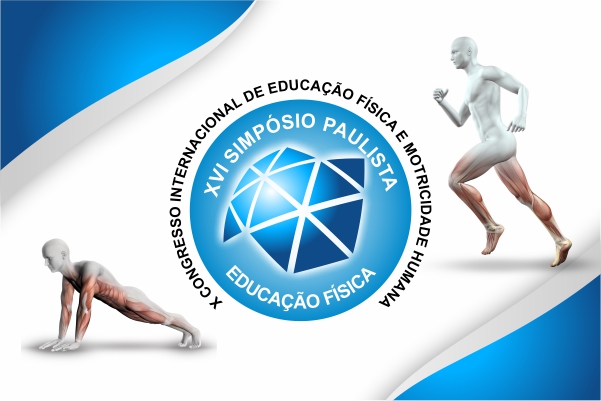OBSTACLE CIRCUMVENTION IN PEOPLE WITH PARKINSON'S DISEASE
"2017-06-15 00:00:00" // app/Providers/../Base/Publico/Artigo/resources/show_includes/info_artigo.blade.php
App\Base\Administrativo\Model\Artigo {#1845 // app/Providers/../Base/Publico/Artigo/resources/show_includes/info_artigo.blade.php #connection: "mysql" +table: "artigo" #primaryKey: "id" #keyType: "int" +incrementing: true #with: [] #withCount: [] +preventsLazyLoading: false #perPage: 15 +exists: true +wasRecentlyCreated: false #escapeWhenCastingToString: false #attributes: array:35 [ "id" => 30063 "edicao_id" => 61 "trabalho_id" => 74 "inscrito_id" => 28 "titulo" => "OBSTACLE CIRCUMVENTION IN PEOPLE WITH PARKINSON'S DISEASE" "resumo" => "Obstacle circumvention leads to reduced walking speed and step length in young adults compared to unobstructed walking. These adjustments are exacerbated in older adults who appear to increase personal space and further reduce walking speed compared to young adults in obstacle circumvention tasks while walking. These age-related impairments are likely related to deficits in selecting and processing environmental information. While these types of sensorimotor deficits are believed to underlie many of the gait abnormalities in people with Parkinson’s disease(PD), obstacle circumvention has yet to be studied during walking in PD. Therefore, the aim of this study was to compare the motor strategies during obstacle circumvention while walking in patients with PD(n=15) to healthy age-matched control participants(n=15). Were made five trials of unobstructed and five with obstacle, in random order. The obstacle was a cylinder(diameter:0.35m - height:1.30m) positioned in the middle of the walkway. Participants self-selected the speed and the side to circumvent the obstacle. 8 cameras Vicon Bonita were used. For the unobstructed walking, trials have calculated the average of the three central steps. For circumvention trials were analyzed 5 steps: 3 before the circumvention:N-3;N-2;N-1 and two during the circumvention:N;N+1. The significance level was maintained at 0.05 and the spatial-temporal parameters were compared by two-way ANOVAs. PD group presented shorter step length(F1,28=13.63,p" "modalidade" => "Comunicação Oral (CO)" "area_tematica" => "AT02 - COMPORTAMENTO MOTOR; MODELAGEM E MÉTODOS DE ANÁLISE DO MOVIMENTO" "palavra_chave" => "OBSTACLE CIRCUMVENTION, PARKINSON'S DISEASE, MOTOR CONTROL" "idioma" => "Inglês" "arquivo" => "TRABALHO_EV083_MD1_SA2_ID28_EXT_10042017120724.pdf" "created_at" => "2020-05-28 15:53:15" "updated_at" => "2020-06-09 18:23:09" "ativo" => 1 "autor_nome" => "VINICIUS ALOTA IGNACIO PEREIRA" "autor_nome_curto" => "VINICIUS ALOTA" "autor_email" => "viniciusalota_dm@hotmail." "autor_ies" => "UNIVERSIDADE ESTADUAL PAULISTA JÚLIO DE MESQUITA FILHO (UNESP)" "autor_imagem" => "" "edicao_url" => "anais-x-ciefmh" "edicao_nome" => "Anais do X Congresso Internacional de Educação Fisica e Motricidade Humana e XVI Simpósio Paulista de Educação Física" "edicao_evento" => "X Congresso Internacional de Educação Física e Motricidade Humana e XVI Simpósio Paulista de Educação Física" "edicao_ano" => 2017 "edicao_pasta" => "anais/ciefmh/2017" "edicao_logo" => "5e4a1c2174ebb_17022020015249.png" "edicao_capa" => "5f182a9857128_22072020090128.jpg" "data_publicacao" => null "edicao_publicada_em" => "2017-06-15 00:00:00" "publicacao_id" => 37 "publicacao_nome" => "Anais do CIEFMH" "publicacao_codigo" => "2527-2268" "tipo_codigo_id" => 1 "tipo_codigo_nome" => "ISSN" "tipo_publicacao_id" => 1 "tipo_publicacao_nome" => "ANAIS de Evento" ] #original: array:35 [ "id" => 30063 "edicao_id" => 61 "trabalho_id" => 74 "inscrito_id" => 28 "titulo" => "OBSTACLE CIRCUMVENTION IN PEOPLE WITH PARKINSON'S DISEASE" "resumo" => "Obstacle circumvention leads to reduced walking speed and step length in young adults compared to unobstructed walking. These adjustments are exacerbated in older adults who appear to increase personal space and further reduce walking speed compared to young adults in obstacle circumvention tasks while walking. These age-related impairments are likely related to deficits in selecting and processing environmental information. While these types of sensorimotor deficits are believed to underlie many of the gait abnormalities in people with Parkinson’s disease(PD), obstacle circumvention has yet to be studied during walking in PD. Therefore, the aim of this study was to compare the motor strategies during obstacle circumvention while walking in patients with PD(n=15) to healthy age-matched control participants(n=15). Were made five trials of unobstructed and five with obstacle, in random order. The obstacle was a cylinder(diameter:0.35m - height:1.30m) positioned in the middle of the walkway. Participants self-selected the speed and the side to circumvent the obstacle. 8 cameras Vicon Bonita were used. For the unobstructed walking, trials have calculated the average of the three central steps. For circumvention trials were analyzed 5 steps: 3 before the circumvention:N-3;N-2;N-1 and two during the circumvention:N;N+1. The significance level was maintained at 0.05 and the spatial-temporal parameters were compared by two-way ANOVAs. PD group presented shorter step length(F1,28=13.63,p" "modalidade" => "Comunicação Oral (CO)" "area_tematica" => "AT02 - COMPORTAMENTO MOTOR; MODELAGEM E MÉTODOS DE ANÁLISE DO MOVIMENTO" "palavra_chave" => "OBSTACLE CIRCUMVENTION, PARKINSON'S DISEASE, MOTOR CONTROL" "idioma" => "Inglês" "arquivo" => "TRABALHO_EV083_MD1_SA2_ID28_EXT_10042017120724.pdf" "created_at" => "2020-05-28 15:53:15" "updated_at" => "2020-06-09 18:23:09" "ativo" => 1 "autor_nome" => "VINICIUS ALOTA IGNACIO PEREIRA" "autor_nome_curto" => "VINICIUS ALOTA" "autor_email" => "viniciusalota_dm@hotmail." "autor_ies" => "UNIVERSIDADE ESTADUAL PAULISTA JÚLIO DE MESQUITA FILHO (UNESP)" "autor_imagem" => "" "edicao_url" => "anais-x-ciefmh" "edicao_nome" => "Anais do X Congresso Internacional de Educação Fisica e Motricidade Humana e XVI Simpósio Paulista de Educação Física" "edicao_evento" => "X Congresso Internacional de Educação Física e Motricidade Humana e XVI Simpósio Paulista de Educação Física" "edicao_ano" => 2017 "edicao_pasta" => "anais/ciefmh/2017" "edicao_logo" => "5e4a1c2174ebb_17022020015249.png" "edicao_capa" => "5f182a9857128_22072020090128.jpg" "data_publicacao" => null "edicao_publicada_em" => "2017-06-15 00:00:00" "publicacao_id" => 37 "publicacao_nome" => "Anais do CIEFMH" "publicacao_codigo" => "2527-2268" "tipo_codigo_id" => 1 "tipo_codigo_nome" => "ISSN" "tipo_publicacao_id" => 1 "tipo_publicacao_nome" => "ANAIS de Evento" ] #changes: [] #casts: array:14 [ "id" => "integer" "edicao_id" => "integer" "trabalho_id" => "integer" "inscrito_id" => "integer" "titulo" => "string" "resumo" => "string" "modalidade" => "string" "area_tematica" => "string" "palavra_chave" => "string" "idioma" => "string" "arquivo" => "string" "created_at" => "datetime" "updated_at" => "datetime" "ativo" => "boolean" ] #classCastCache: [] #attributeCastCache: [] #dates: [] #dateFormat: null #appends: [] #dispatchesEvents: [] #observables: [] #relations: [] #touches: [] +timestamps: false #hidden: [] #visible: [] +fillable: array:13 [ 0 => "edicao_id" 1 => "trabalho_id" 2 => "inscrito_id" 3 => "titulo" 4 => "resumo" 5 => "modalidade" 6 => "area_tematica" 7 => "palavra_chave" 8 => "idioma" 9 => "arquivo" 10 => "created_at" 11 => "updated_at" 12 => "ativo" ] #guarded: array:1 [ 0 => "*" ] }



